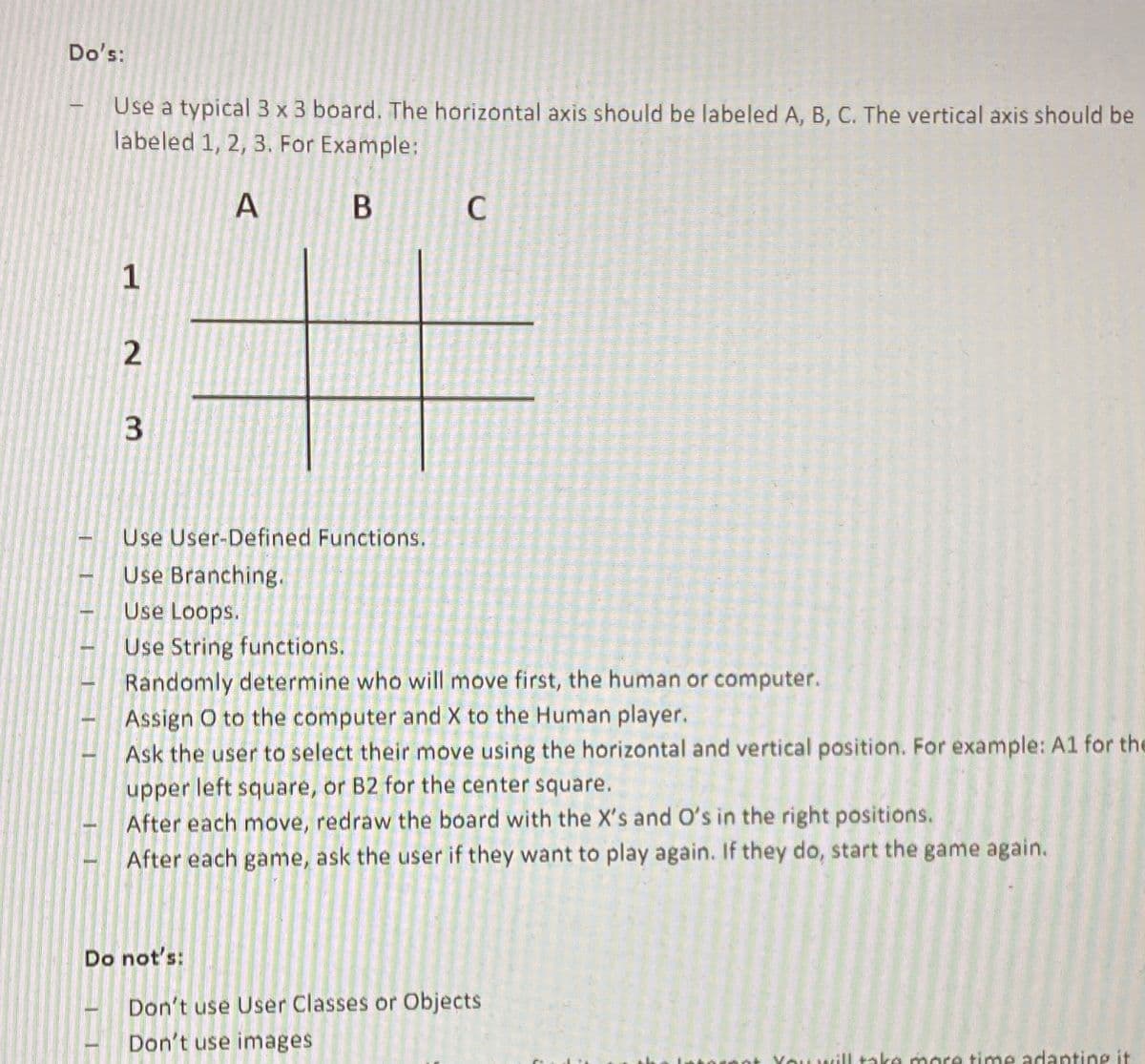Tic Tac Toe game that will match a player against the computer. Do's: Use a typical 3 x 3 board. The horizontal axis should be labeled A, B, C. The vertical axis should be labeled 1, 2, 3. For Example Use User-Defined Functions. Use Branching. Use Loops. Use String functions. Randomly determine who will move first, the human or computer. Assign O to the computer and X to the Human player. Ask the user to select their move using the horizontal and vertical position. For example: A1 for the upper left square, or B2 for the center square. After each move, redraw the board with the X's and O's in the right positions. After each game, ask the user if they want to play again. If they do, start the game again. Do not's: Don't use User Classes or Objects Don't use images
Control structures
Control structures are block of statements that analyze the value of variables and determine the flow of execution based on those values. When a program is running, the CPU executes the code line by line. After sometime, the program reaches the point where it has to make a decision on whether it has to go to another part of the code or repeat execution of certain part of the code. These results affect the flow of the program's code and these are called control structures.
Switch Statement
The switch statement is a key feature that is used by the programmers a lot in the world of programming and coding, as well as in information technology in general. The switch statement is a selection control mechanism that allows the variable value to change the order of the individual statements in the software execution via search.
coding in C++
Tic Tac Toe game that will match a player against the computer.
Do's:
- Use a typical 3 x 3 board. The horizontal axis should be labeled A, B, C. The vertical axis should be labeled 1, 2, 3. For Example
- Use User-Defined Functions.
- Use Branching.
- Use Loops.
- Use String functions.
- Randomly determine who will move first, the human or computer.
- Assign O to the computer and X to the Human player.
- Ask the user to select their move using the horizontal and vertical position. For example: A1 for the upper left square, or B2 for the center square.
- After each move, redraw the board with the X's and O's in the right positions.
- After each game, ask the user if they want to play again. If they do, start the game again.
Do not's:
- Don't use User Classes or Objects
- Don't use images

Trending now
This is a popular solution!
Step by step
Solved in 2 steps with 2 images


